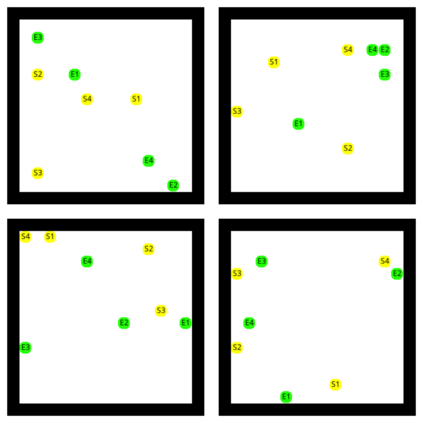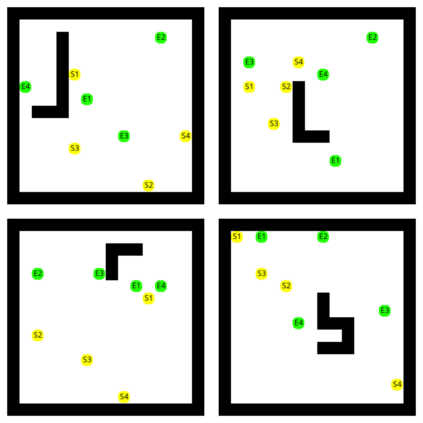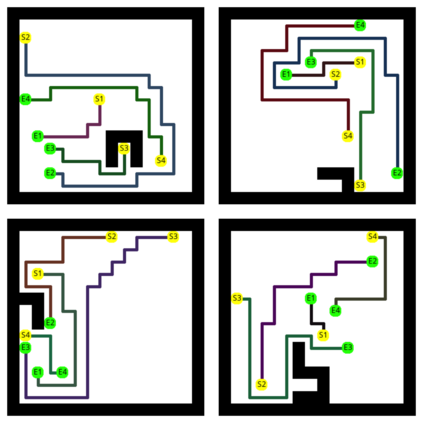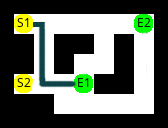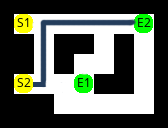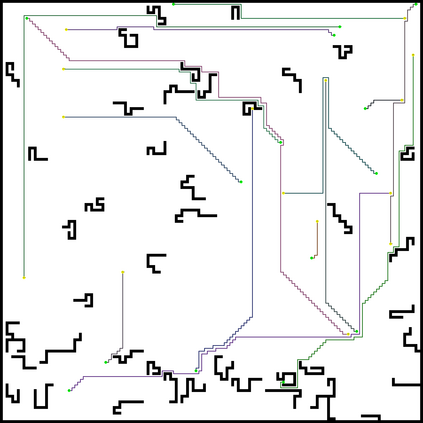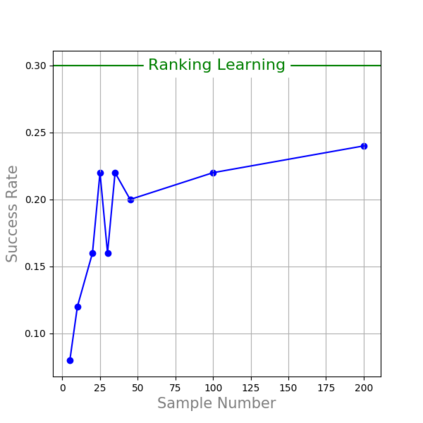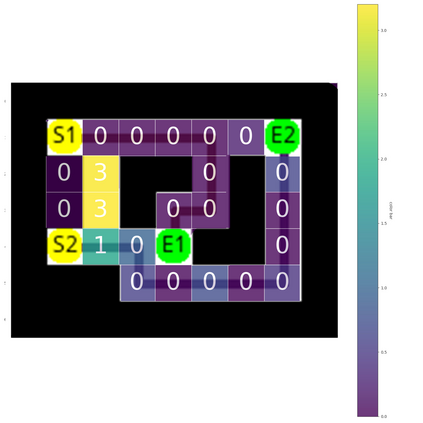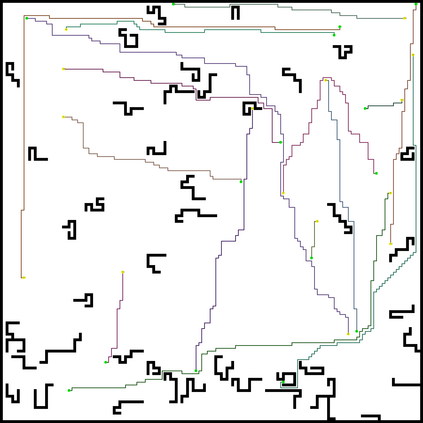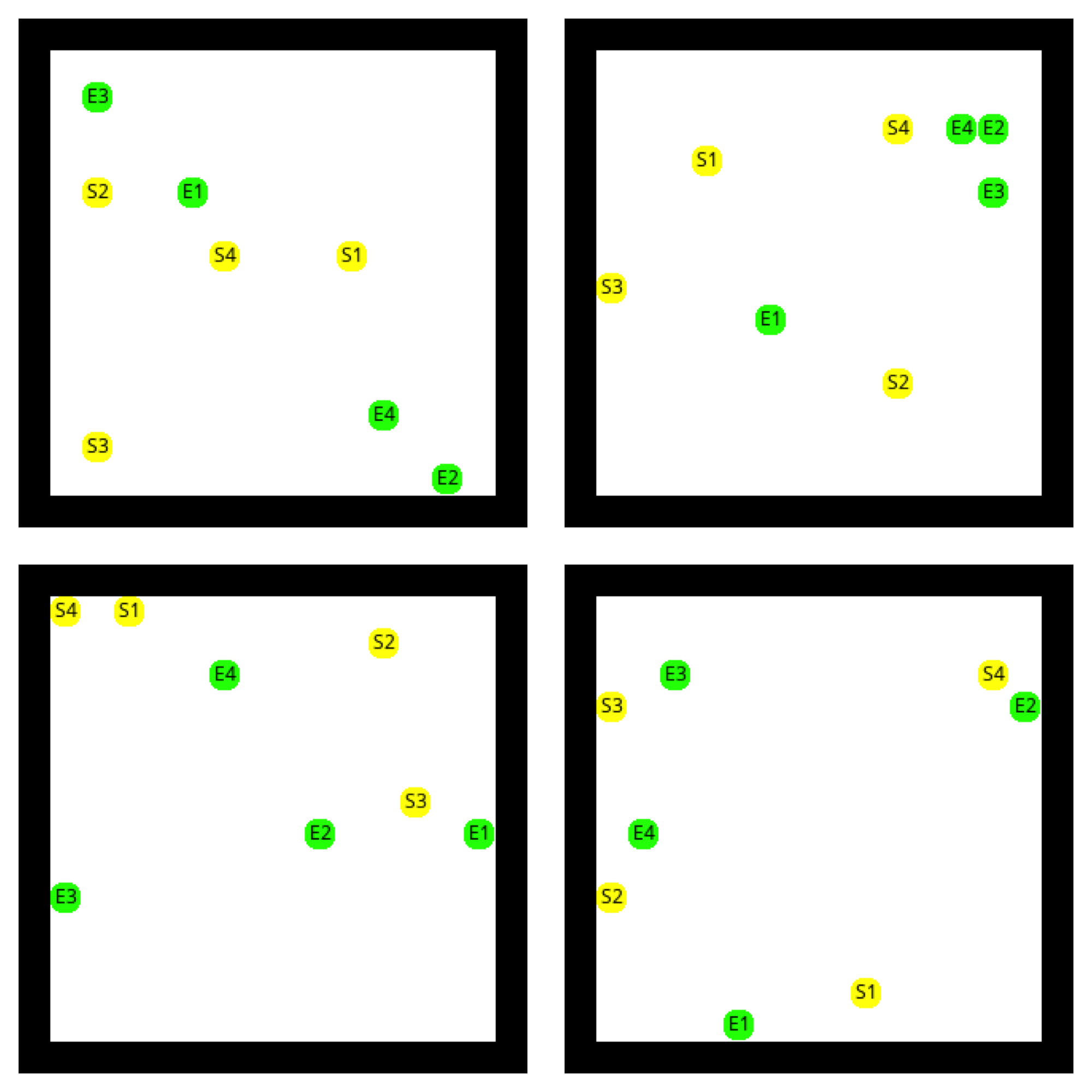Circuit routing has been a historically challenging problem in designing electronic systems such as very large-scale integration (VLSI) and printed circuit boards (PCBs). The main challenge is that connecting a large number of electronic components under specific design rules involves a very large search space. Early solutions are typically designed with hard-coded heuristics, which suffer from problems of non-optimal solutions and lack of flexibility for new design needs. Although a few learning-based methods have been proposed recently, they are typically cumbersome and hard to extend to large-scale applications. In this work, we propose a new algorithm for circuit routing, named Ranking Cost, which innovatively combines search-based methods (i.e., A* algorithm) and learning-based methods (i.e., Evolution Strategies) to form an efficient and trainable router. In our method, we introduce a new set of variables called cost maps, which can help the A* router to find out proper paths to achieve the global objective. We also train a ranking parameter, which can produce the ranking order and further improve the performance of our method. Our algorithm is trained in an end-to-end manner and does not use any artificial data or human demonstration. In the experiments, we compare with the sequential A* algorithm and a canonical reinforcement learning approach, and results show that our method outperforms these baselines with higher connectivity rates and better scalability.
翻译:在设计电子系统,如大规模集成(VLSI)和印刷电路板(PCBs)方面,电路路路由一直是历史上一个具有挑战性的问题。主要挑战是,在具体设计规则下,连接大量电子部件需要很大的搜索空间。早期解决方案通常是用硬编码的超光速方法设计的,这些方法有非最佳解决办法的问题,对新的设计需求缺乏灵活性。虽然最近提出了一些基于学习的方法,但这些方法通常很繁琐,很难推广到大规模应用。在这项工作中,我们提出了新的电路路路由(称为定级成本)算法,其中创新地将基于搜索的方法(即A*算法)和基于学习的方法(即进化战略)结合起来,形成高效和可训练的路由路由器。在我们的方法中,我们引入了一套新的变量,称为成本地图,有助于A*路由路由路由找到实现全球目标的正确路径。我们还培训了一种排名参数,可以产生排序顺序顺序,进一步改进我们方法的性能改进我们方法的性能将基于搜索方法(即演进战略)的方法与人造程的升级方法进行对比。我们用一个比式式式式式式式式的学习方法,我们用一种不能够用一种更精确式式的模型式式式式式式式式式式式式式式式的学习方法,我们用一种方法来显示一种不使用一种比。

